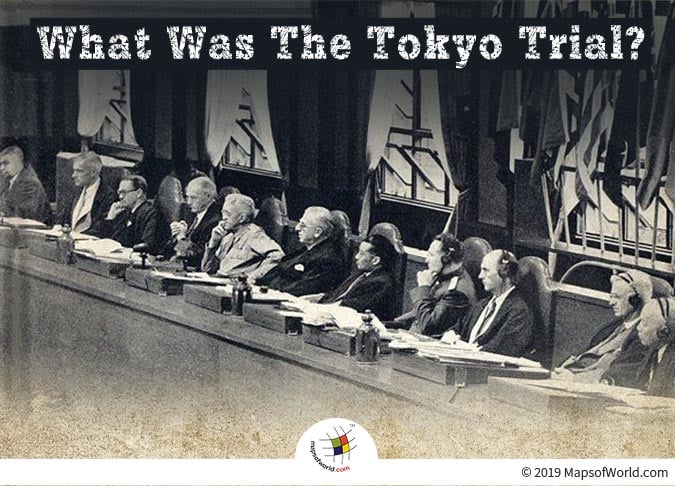

The Judges and Prosecutors were Supplied by Allied Nations and the Colonies (Australia, Canada, China, France, Great Britain, India, etc).
World War II was one of the deadliest armed conflicts in the history of mankind. Over 30 countries and their colonies were involved in the war for about 6 years and it ended in a victory of the Allied nations over the Axis powers, primarily Nazi Germany and Japan. With the end of conflict, the Allies decided to charge and bring to trial preeminent Nazi and Japanese leaders. The International Military Tribunal (IMT) was set up in Nuremberg, Germany, and the 13 highly publicized Nuremburg Trials were held between 1945 and 1949. Nazi leaders and their associates were charged of crimes against peace and humanity, war crimes, and conspiracy. A similar tribunal called the International Military Tribunal for the Far East (IMTFE) was set up in Tokyo, Japan, to bring to trial war criminals of the Japanese Empire. This trial, popularly referred to as the Tokyo Trial, continued for nearly two and a half years from April 29, 1946 to November 12, 1948.
The Charter of the International Military Tribunal for the Far East (CIMTFE), which was modelled on the Charter of the International Military Tribunal (Nuremberg Charter), was approved by General Douglas MacArthur on January 19, 1946. General MacArthur had been the Supreme Commander of the Allied Forces in World War II. The very same day, the Allies issued a proclamation announcing the establishment of the IMTFE. After months of preparation, the IMTFE convened on April 29, 1946. The trial was held at Tokyo, in the War Ministry office.
Of nearly 80 war criminal suspects who were being held captive at the Sugamo prison (in Ikebukuro) after the end of World War II, 28 stood trial at the IMTFE. 19 of them were military personnel of Japan and 9 were civilians. The remaining prisoners were tried in their respective victim countries.
Those who stood trial with the IMFTE included 4 former premiers, 3 former foreign ministers, 4 former war ministers, and 2 former naval ministers. The defendants were charged with 55 separate counts of criminal acts. The gravest of these crimes included torture, bio-warfare, experimentation on prisoners, rape, and murder of Chinese civilians and prisoners of war.
The judges and prosecutors were supplied by Allied nations and the colonies (Australia, Canada, China, France, Great Britain, India, the Netherlands, New Zealand, the Philippines, the United States, and the USSR). Hundreds of attorneys, most of them Japanese, represented the defendants.
Of the 28 defendants who stood trial, 7 were sentenced to death, 16 were sentenced to life imprisonment, and 2 others received varying terms in prison. 2 of the defendants died of natural causes even as the trial was underway, and one was deemed mentally unfit to stand trial.
In addition, over 5,700 Japanese military personnel arrested for war crimes were tried in Australia, China, France, the Netherlands, the Philippines, the UK, and the USA. China held 13 separate tribunals to try its prisoners. Like the Nuremberg Trials, the Tokyo Trial was also criticized by many who questioned the legal framework of the trial, and by some who believed that the sentences handed out were inappropriate.
Related Links:
The Republic of Madagascar is an island country located in the Indian Ocean, off the…
The Euro is the official currency of the European Union. It is, however, not incumbent…
There are many countries or regions that are partially recognized by the UN, have disputes…
The Alaska Statehood Act was signed into law by President Dwight D. Eisenhower in 1958,…
The name Persia may, however, only be used to refer to Iran in some contexts.…
Hawaii is an Island State in the US. It is one of the 50 states…